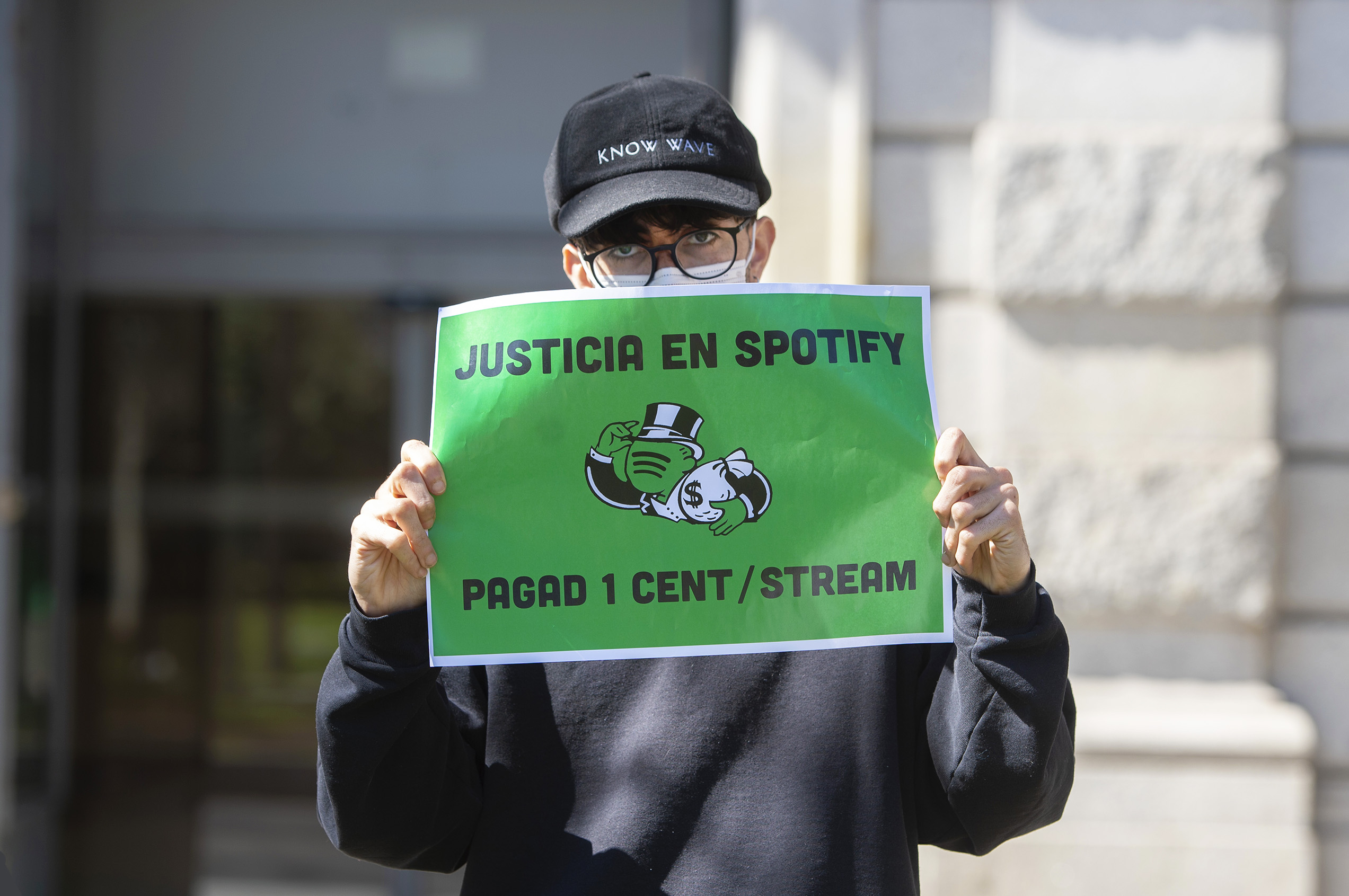At the end of last year, my family and I had a little holiday in Amsterdam and took a canal trip round the city. It was cold and drizzly, and the only other passengers were a young French couple and a family from Spain. The pilot, besides steering the boat, provided an English-language commentary, sometimes hard to hear above the music echoing round the largely empty cabin. It was austere stuff: voices and instruments, reminiscent of late Stravinsky with an occasional medieval tinge to the harmony; compelling, as I remarked to my wife, but an odd choice for a tourist boat. Sometimes, at the end of a piece, there was applause. Were we listening to Dutch radio? There were no announcements.
Half an hour into the cruise and to my lasting mortification, I realised the music was issuing from my trousers. Specifically, it was coming from the Spotify app on the phone in my pocket. For my listening enjoyment — and that of my fellow tourists — the app had selected a playlist of pieces by my late friend, Ivan Moody. Had I somehow nudged the screen to cause this? Had I perhaps remarked “That’s a very moody-looking sky!”
Mood, I need hardly point out, is Spotify’s stock-in-trade. The platform responds to our moods, it enhances our moods, it confirms and exploits and manipulates our moods. It does this by remembering previous choices (at some point I must have listened to a piece of Ivan’s from this playlist), recommending tracks and occasionally foisting them on us. The song we requested ends and, before we know it, we’re hearing something the algorithm thinks is a good match. Music has become muzak.
While I have never hated Spotify as much as I did that afternoon puttering down the Prinsengracht, I will admit I have been suspicious of streaming services from the moment I first heard about them. It’s partly that I dislike being told what to listen to, partly that I don’t trust multinational companies with art, and partly that I am dubious about music that is too easily gained, songs and symphonies that can be heard by accident. I think we value them less.
Liz Pelly’s brilliantly researched book, Mood Machine: The Rise of Spotify and the Costs of the Perfect Playlist, has been described as “a searing investigation,” a “take-down” and “a savage indictment.” It is all of those things and quite right too. Streaming giants have robbed musicians of their livelihoods. Not the Taylor Swifts and Beyoncés, whose streams are in the billions — and, anyway, there is their merchandising — but practically everybody else. Musicians with less-than-mega fame will have taken a big hit to their earnings.
We’ve all heard about the tiny fractions of a cent earned from the streaming of individual tracks — Pelly has the figures — and we’ve read about artists who have removed themselves and their music from Spotify either in protest at these rates or because they have taken a stand against the platform offered to hate-purveying podcasters. They always seem to come back. The depressing truth is that Spotify has us all over a barrel.
The odd thing is that when the Swedish entrepreneur Daniel Ek came up with his streaming idea, it wasn’t really about the music. Spotify is often spoken of as though it were the legal version of Napster, which, at the end of the twentieth century, allowed people to share music with each other. In a way it is. Record labels license their music to Spotify. There have been hold-outs — the classical label Hyperion stayed pure for a while — but in the end they all tend to cave, just as the musicians do. Ek, however, had no interest in music per se. As Pelly points out, his goal was to sell advertising via a streaming app, and music was merely the offer. It might have been movies. It nearly was. The recent adding of podcasts should be seen in this light.
Napster was shut down in 2001 because of copyright infringement, but its work continued on YouTube. “I do not own copyright in this,” was a common statement by YouTube users, as though an upfront admission somehow exonerated them from the online posting of another person’s intellectual property. It is the same attitude that gives Spotify its power. Most music fans simply don’t care that their favourite musicians are being ripped off.
But Pelly’s book is more than a moralising rant on behalf of recording artists and composers, satisfying though that is to read. She makes the case very effectively that, whether they know it or not, Spotify’s listeners are just as exploited as the musicians to whom they listen. The algorithm harvests our musical tastes and offers us soundalike music, some of which is created by session musicians to resemble those original choices. Will AI created sounds be far behind? It is, of course, already there.
It is not only that Spotify users are listening to fakes. Even when they are hearing the genuine article they are often getting only half an experience. Tracks will turn up in random orders. Larger pieces of music that were divided into convenient sized tracks by a record label are shuffled out of shape. Who’s playing sax on that track? Who composed this song? What were those words she just sang? Access to this sort of information is very hard to come by, especially if you like your information accurate.
Spotify works best if you’re not paying attention. It’s like having the radio on in the background. It’s also a useful research tool: I have it on my phone because it’s a convenient way of quickly checking a piece of music (though it’s surprising how often I search for something that isn’t there). But for listening to music — proper listening, informed listening, uninterrupted and with good sound quality — it will not do.
I doubt Daniel Ek would consider that a criticsm.




